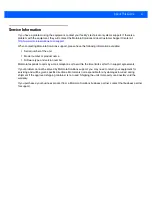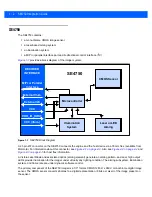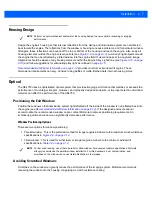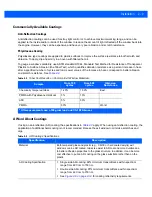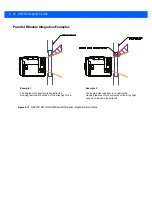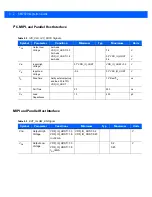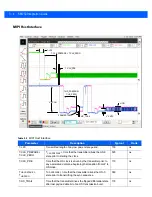
Installation
2 - 9
Commercially Available Coatings
Anti-Reflection Coatings
Anti-reflection coatings can be used for stray light control or to achieve maximum working range, and can be
applied to the inside and/or outside of the window to reduce the amount of light reflected off the window back into
the engine. However, they can be expensive and have very poor abrasion and scratch resistance.
Polysiloxane Coating
Polysiloxane type coatings are applied to plastic surfaces to improve the surface resistance to both scratch and
abrasion. To apply, dip and air dry in an oven with filtered hot air.
To gauge a window's durability, use ASTM standard D1044, Standard Test Method for Resistance of Transparent
Plastics to Surface Abrasion (the Taber Test), which quantifies abrasion resistance as a percent increase in haze
after a specified number of cycles and load. Lower values of the increase in haze correspond to better abrasion
and scratch resistance. See
A Word About Coatings
If using an anti-reflective (AR) coating, the specifications in
apply. When using anti-reflection coating, the
application of additional hard-coating is not recommended. Recess the exit window to minimize scratches and
digs.
Table 2-2
Taber Test Results on Common Exit Window Materials
Sample
Haze 100
cycles
Haze 500
cycles
Abrasion
Resistance
Chemically Tempered Glass
1.20%
1.50%
Best
PMMA with Polysiloxane Hardcoat
3%
10%
ADC
5%
30%
PMMA
30%
Worst
* All measurements use a 100 gram load and CS-10F Abraser.
Table 2-3
AR Coatings Specifications
Specification
Description
Material
Both tempered glass and plastic (e.g., CR-39 or hard coated acrylic) exit
windows can be AR coated. Glass is easier to AR coat and more durable due
to better adhesion properties to the glass structure. In addition, it can be more
cost effective to put an AR coating on the glass substrate rather than on the
plastic.
AR Coating Specification
•
Single side AR-coating: 92% minimum transmittance within spectrum
range from 420 nm to 730 nm.
•
Double side AR-coating: 97% minimum transmittance within spectrum
range from 420 nm to 730 nm.
•
for coating reflectivity requirements.
Содержание SE4750
Страница 1: ...SE4750 INTEGRATION GUIDE ...
Страница 2: ......
Страница 3: ...SE4750 INTEGRATION GUIDE 72E 171726 01 Revision A November 2013 ...
Страница 6: ...iv SE4750 Integration Guide ...
Страница 10: ...viii SE4750 Integration Guide ...
Страница 14: ...xii SE4750 Integration Guide ...
Страница 18: ...1 4 SE4750 Integration Guide ...
Страница 29: ...Installation 2 11 Aiming Pattern Figure 2 6 SE4750 SR LSR AIM Optical Path Aiming Pattern ...
Страница 36: ...2 18 SE4750 Integration Guide ...
Страница 46: ...3 10 SE4750 Integration Guide Figure 3 3 VCC_ILLUM Current Figure 3 4 VDD_IO Host Current Parallel Version ...
Страница 53: ...Electrical Interface 4 5 Figure 4 3 Parallel Host Flex p n 15 171522 xx ...
Страница 66: ...5 12 SE4750 Integration Guide ...
Страница 78: ...A 2 SE4750 Integration Guide ...
Страница 82: ...Index 4 SE4750 Integration Guide ...
Страница 84: ......
Страница 85: ......

